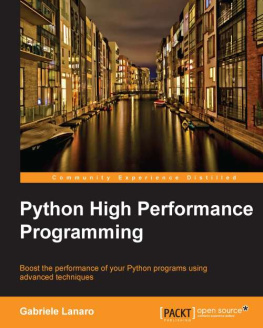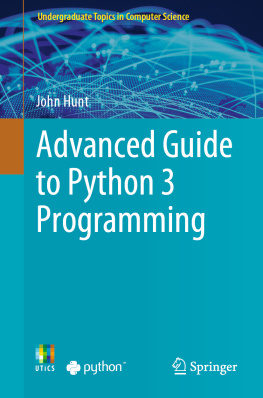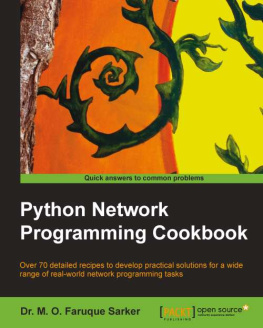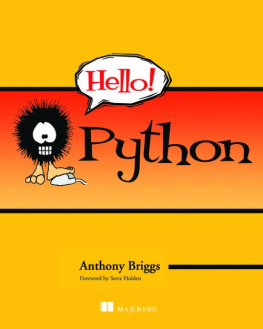Karamagi - Advanced Python Programming
Here you can read online Karamagi - Advanced Python Programming full text of the book (entire story) in english for free. Download pdf and epub, get meaning, cover and reviews about this ebook. year: 2020, publisher: UNKNOWN, genre: Computer. Description of the work, (preface) as well as reviews are available. Best literature library LitArk.com created for fans of good reading and offers a wide selection of genres:
Romance novel
Science fiction
Adventure
Detective
Science
History
Home and family
Prose
Art
Politics
Computer
Non-fiction
Religion
Business
Children
Humor
Choose a favorite category and find really read worthwhile books. Enjoy immersion in the world of imagination, feel the emotions of the characters or learn something new for yourself, make an fascinating discovery.

Advanced Python Programming: summary, description and annotation
We offer to read an annotation, description, summary or preface (depends on what the author of the book "Advanced Python Programming" wrote himself). If you haven't found the necessary information about the book — write in the comments, we will try to find it.
Karamagi: author's other books
Who wrote Advanced Python Programming? Find out the surname, the name of the author of the book and a list of all author's works by series.
Advanced Python Programming — read online for free the complete book (whole text) full work
Below is the text of the book, divided by pages. System saving the place of the last page read, allows you to conveniently read the book "Advanced Python Programming" online for free, without having to search again every time where you left off. Put a bookmark, and you can go to the page where you finished reading at any time.
Font size:
Interval:
Bookmark:
Inheritance..................................................................................... 2
Loops............................................................................................ 13
Decorator....................................................................................... 299
B-tree ............................................................................................. 551
Deletion from a B-tree............................................................... 560
 viii
viii Encapsulation Concept
Encapsulation ConceptSingle inheritance enables a derived class to inherit properties and behavior from a single parent class. It allows a derived class to inherit the properties and behavior of a base class, thus enabling code reusability as well as adding new features to the existing code. This makes the code much more elegant and less repetitive. In Single Inheritance one class extends another class (one class only).
 Single Inheritance
Single InheritanceIn above diagram, Class B inherits features from only Class A. Class A is a super class and Class B is a Sub-class.
Multiple inheritance is a feature of some object-oriented computer programming languages in which an object or class can inherit characteristics and features from more than one parent object or parent class.
 Multiple Inheritance
Multiple InheritanceAs per the above diagram, Class C inherits features from both Class A and Class B.
In Multilevel Inheritance, one class can inherit from a derived class. Hence, the derived class becomes the base class for the new class.
 Fig: Multilevel Inheritance
Fig: Multilevel InheritanceAs per shown in diagram Class C is subclass of B and B is a of subclass Class A.
When more than one classes inherit a same class then this is called hierarchical inheritance. In other words, one class is inherited by many sub classes or a parent class has many children.
 Hierarchical Inheritance
Hierarchical InheritanceAs per the above example, Class B, C, and D inherit the same class A.
 Hybrid inheritance
Hybrid inheritanceAs per above example, all the public and protected members of Class A are inherited into Class D, first via Class B and secondly via Class C.
Access specifiers define how the members of the class can be accessed. There are three common types:
1. Public
2. Private
3. Protected
Public class members are accessible out side the class and it is available for every one.
Private class members are accessible with the class and it is not accessible out side the class. By default class variables and member functions are private.
Protected class members are similar to the private access specifier. It makes a class member inaccessible outside the class but can be accessed by any subclass of that class.
Font size:
Interval:
Bookmark:
Similar books «Advanced Python Programming»
Look at similar books to Advanced Python Programming. We have selected literature similar in name and meaning in the hope of providing readers with more options to find new, interesting, not yet read works.
Discussion, reviews of the book Advanced Python Programming and just readers' own opinions. Leave your comments, write what you think about the work, its meaning or the main characters. Specify what exactly you liked and what you didn't like, and why you think so.




